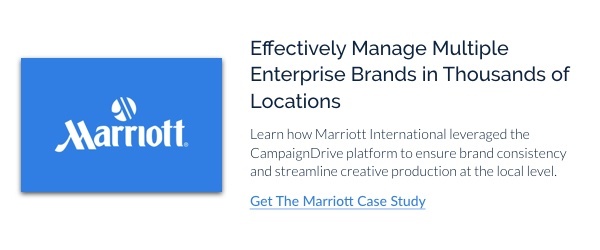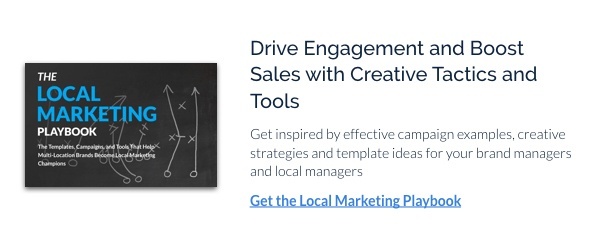As a brand manager, it can sometimes be hard to appreciate great marketing for what it is. You know first-hand the amount of approvals, coordination, and technology required to produce even a single piece of social media content. Forget enjoying the Super Bowl commercials like everyone else – you see the months-long journey of coordinating people, resources, and internal requirements.
Launching an enterprise marketing campaign at a large organization is the product of balancing big teams, loads of digital assets, complex processes and rigorous internal requirements. Without a solution to store and access your marketing assets, all of your hard work could go up in smoke. As an enterprise, you can't get by with simpler solutions that work for small teams, like a Dropbox account or FTP site. You're going to need much more!
Digital Asset Management (DAM) tools are a category of software that allow brands to store and organize all of their digital assets. As an enterprise organization, your various stakeholders all need digital asset management (DAM) that feels simple to use, even if it's incredibly robust. With hundreds of users across locations and departments, a system designed for ease-of-use can facilitate higher adoption and better organization. In this article, we'll explain the specific features and benefits that define the world's most effective enterprise DAM tools.
But First, What Do We Mean By Enterprise?
The criteria for a business to be considered an "enterprise" can vary wildly depending on who you're talking to. ADP draws the line at 500 or more employees. Gartner's criteria for a midsize enterprise are 100-999 employees, and annual revenues of more than $50 million. [2]
While all these definitions have their merits, we like to define "enterprise" with a simple revenue threshold:
- An enterprise business operates with annual revenues of $100 million or more.
By this definition, most enterprise organizations have at least 500 employees and full-time contractors, with most having 1,000 or more.
7 Ways DAM Benefits Enterprise Businesses
Organizations of all sizes can benefit significantly from adopting the right tool for managing their digital assets. However, selecting the right DAM can solve some of the challenges that enterprise marketing managers report struggling with, regardless of industry.
One survey on marketing trends at large organizations, by Skyword, [3] found that marketing leadership reports their time and resources are focused on content, technology, and globalizing their reach. The specific findings stated that:
- 40% of marketing leaders are investing more in their content marketing strategy and asset creation.
- 43% of brands are actively developing a global content strategy, including multi-language content development.
- For 54% of enterprises, brand storytelling and marketing execution are a company-wide undertaking.
- Brand managers are now responsible for coordinating global employees, multiple teams, and even multiple languages in their content marketing strategies. This is only possible with the use of sophisticated technology. Fortunately, DAM has the potential to enable complex marketing workflows.
1. Comprehensive Archives
DAM systems serve as a single, centralized repository for your organization's marketing assets, which can be tagged with metadata for easy retrieval through keyword or campaign search. The potential for time and cost-savings here is immense; research estimates that the average American workers spend up to 20% of their time searching for information. [4]
How many hours a day do your designers, marketers, and brand managers spend searching for assets? Eliminate painful searches with a more organized approach to asset storage and categorization through DAM.
2. Global System of Record
As enterprise marketing teams develop increasingly global strategies for their content, enterprise marketing teams need a centralized, cloud or SaaS-based system for digital assets. The DAM can be the system of record (SOR); a technical term for software which is used to define the "authoritative data source for a given data element or piece of information." Not only should DAM serve as a SOR, it should also serve as the centralized point of activity for marketing workflows, including asset approval, updates, modifications, and information on usage.
3. 24/7 Access
Marketing leadership needs 24/7 access to their organization's assets, which can be enabled through cloud-based Digital Asset Management. Optimally, features like search and metadata tagging can enable quick access to historic and current assets, even for enterprises with millions of assets.
Not every employee or stakeholder needs comprehensive access. Too much access has risks to both data security and optimal marketing execution. With a DAM that allows you to provide asset access on a need-to-know basis, you can ensure your locals are using the right campaigns, templates, and imagery.
4. Better Workflow Visibility
Lack of transparency is a major source of frustration at any enterprise. For brand managers at distributed organizations, one familiar example could be related to the process by which local affiliates request custom assets. A sure sign of a workflow that doesn't make sense is an increase in complaints from your marketers. Local marketers may express dissatisfaction that asset turnaround time takes weeks, or more. Meanwhile, your designers may feel intense pressure to churn out custom marketing assets and be dealing with a giant backlog of requests. With a DAM, both local outlets and head office marketers have insight into who needs assets and how the asset creation process is working. Brand managers can create clear timelines, objectives and manage expectations among stakeholders to achieve greater efficiency.
5. Higher Asset ROI
It's easy for assets to get lost or overlooked without a sufficient tool for storage, retrieval, and search. Investments are a waste if they're not paid off. Can you imagine $250,000 worth of photos from a past shoot that were intended for reuse but ended up lost among inconsistently named files on your FTP? Unfortunately, this type of waste occurs frequently when asset access and search functions are poor.
With the right DAM tool, your organization can associate assets with campaigns and other metadata. You can also provide customized access to stakeholders, reducing your risk of high-cost assets that are overlooked.
6. Increased Promotions & Marketing Diversity
In some enterprise settings, a DAM that offers ease-of-use can significantly increase promotional activity among stakeholders; specifically local marketing affiliates. By enabling integration with print vendors, content management systems (CMS), social media marketing and other tools, local marketers can create their own assets, even if they don't have a background in marketing or design.
7. Improved Oversight
While some enterprises have a single website, most of today's brands need assets to be used everywhere. Enterprise businesses often control multiple brands. They may also invest in branded micro-sites or channels, and are likely to distribute content across dozens of platforms. For distributed brands, campaign content may appear across thousands of unique platforms.
DAM provides brand managers with access to data insights on how, when, and where assets are used. While streamlined workflows for approval are certainly a benefit, there's also the ability to use insights on asset performance to improve future campaign design, and knowledge of customer segments. The potential is nearly limitless. Marketing managers can even split test campaigns across similar customer segments by supplying different versions of assets to their local affiliates.
The Benefits of DAM for Enterprise Brands
Your brand isn't the only one who stands to benefit from enterprise DAM tools. The right DAM can offer benefits to every stakeholder - from your designers to your locals. When selecting and implementing a tool for digital asset management, one specifically designed to drive value for distributed brands could yield higher ROI.
For franchisees, dealers, and other local affiliates of enterprise companies, a DAM tool should act like a window. Your affiliates have comprehensive access to all of the powerful assets they need to support their own objectives. They can access premium photography, iconography, and brand-licensed materials. Not only does this benefit the quality and results of their marketing, it builds affinity with the brand.
CampaignDrive by Pica9 is designed to streamline the complex workflow needs of the distributed enterprise. We offer features designed specifically to drive adoption among local franchisees, dealers, or affiliates.
CampaignDrive customers can access extensive DAM benefits, including templating features, analytics, integrations with other tools in your marketing ecosystem, and much more.
Sources:
- http://adpemploymentreport.com/2017/January/NER/NER-January-2017.aspx
- http://www.gartner.com/it-glossary/smbs-small-and-midsize-businesses/
- http://www.skyword.com/marketing-trends-report-finds-that-enterprise-teams-are-slow-to-transform-to-embrace-new-challenges/
- http://www.cottrillresearch.com/various-survey-statistics-workers-spend-too-much-time-searching-for-information/






